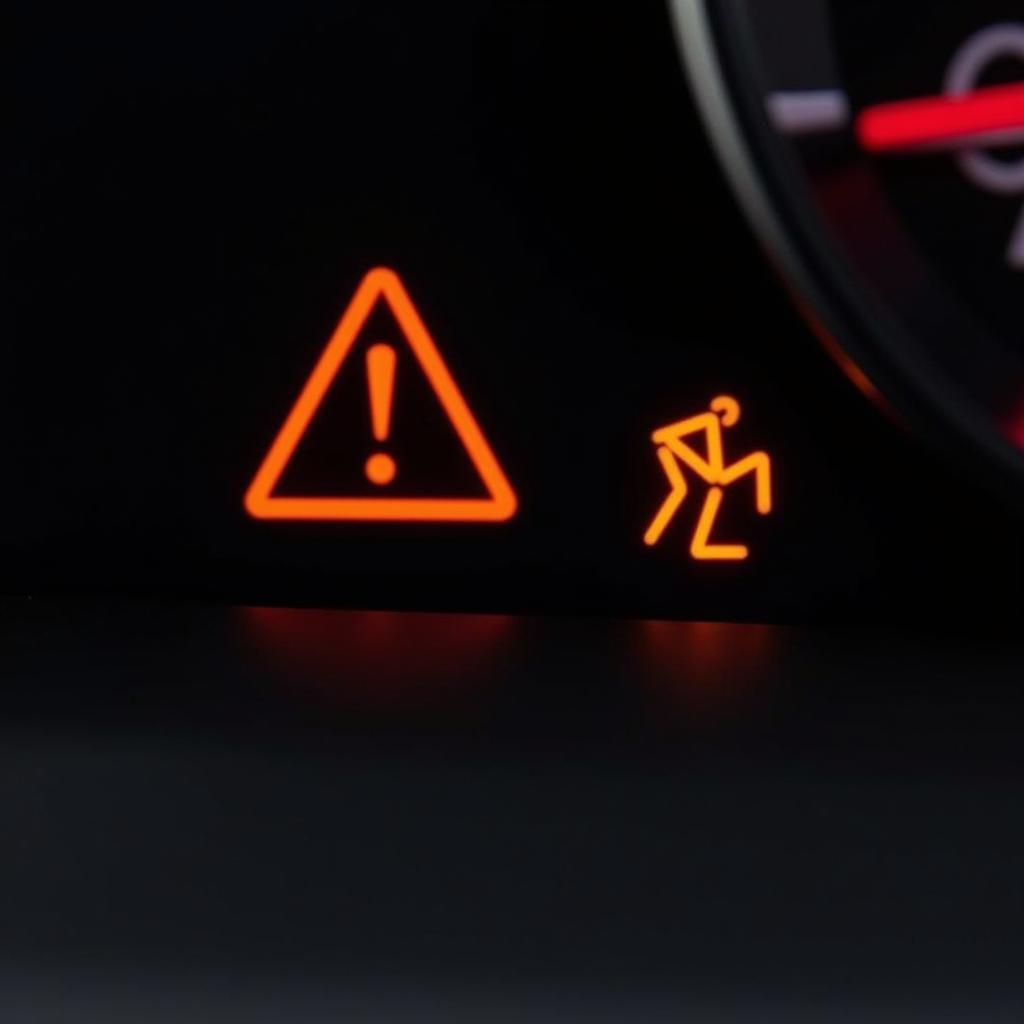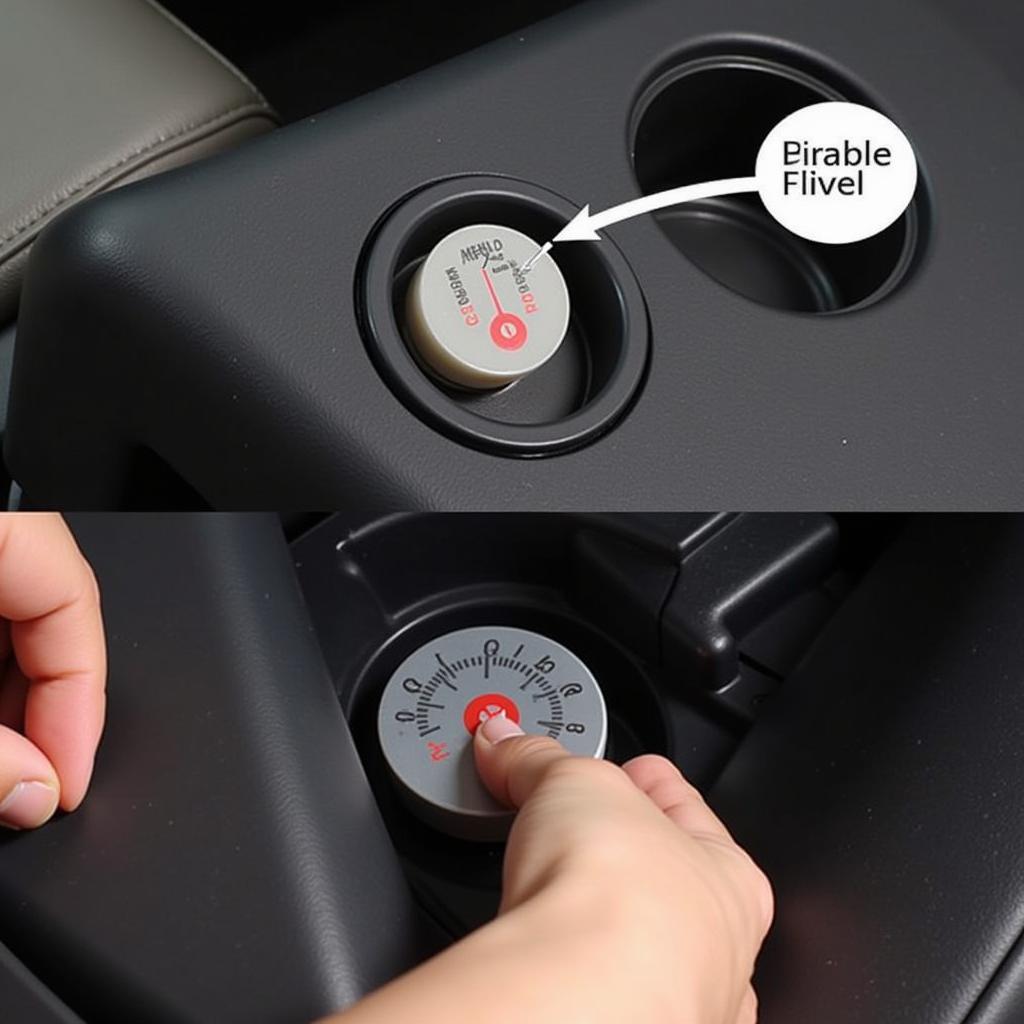The brake warning light on your Honda Pilot dashboard is a crucial safety feature, and when it illuminates, it’s essential to understand what it’s trying to tell you. While a simple reminder to release the parking brake could be the cause, it might also signal a more serious issue within your braking system. This comprehensive guide will explore the common reasons behind a Honda Pilot brake warning light, troubleshooting tips, and essential maintenance practices to keep your SUV stopping safely and reliably.
Common Causes of a Honda Pilot Brake Warning Light
Several factors can trigger the brake warning light in your Honda Pilot. Let’s delve into the most frequent culprits:
- Parking Brake Engaged: This is the most straightforward explanation. Always ensure you fully disengage the parking brake before driving.
- Low Brake Fluid Level: Your Honda Pilot relies on hydraulic pressure to engage the brakes. If the brake fluid level drops too low, typically due to a leak or worn brake pads, the warning light will activate.
- Worn Brake Pads: Brake pads naturally wear down over time. When they reach a certain thickness, the brake pad wear sensor will trigger the warning light, signaling the need for replacement.
- Faulty Brake Light Switch: The brake light switch activates your brake lights when you press the pedal. If this switch malfunctions, it can also illuminate the brake warning light.
- ABS System Malfunction: Your Honda Pilot’s Anti-lock Braking System (ABS) helps prevent wheel lockup during hard braking. A malfunction within the ABS system, often indicated by a separate ABS warning light, can also trigger the brake warning light.
- Other Issues: While less common, problems with the master cylinder, brake lines, or other braking system components can also illuminate the brake warning light.
 Honda Pilot Dashboard with Brake Warning Light
Honda Pilot Dashboard with Brake Warning Light
Troubleshooting a Honda Pilot Brake Warning Light
Before rushing to a mechanic, you can perform a few basic checks:
- Check Your Parking Brake: Ensure your parking brake is fully disengaged. If it’s partially on, it can trigger the warning light.
- Inspect Brake Fluid Level: Locate the brake fluid reservoir under the hood and check the fluid level. If it’s below the “MIN” mark, add the appropriate DOT 3 or DOT 4 brake fluid as specified in your owner’s manual.
- Visually Inspect Brake Pads: If possible, have a look at your brake pads through the wheel spokes. If they appear significantly thin or you notice metal-on-metal contact, it’s time for a replacement.
 Checking Brake Fluid Level in a Honda Pilot
Checking Brake Fluid Level in a Honda Pilot
When to Seek Professional Help
If the brake warning light remains illuminated after these checks, or if you notice any of the following symptoms, it’s crucial to seek immediate professional assistance:
- Spongy or Soft Brake Pedal: This can indicate air in the brake lines, a serious issue requiring immediate attention.
- Grinding Noise When Braking: This usually signifies worn-out brake pads, and continued driving can damage your rotors.
- Pulling to One Side When Braking: This can indicate uneven brake pad wear, a stuck caliper, or a problem with the hydraulic system.
2020 honda pilot brake warning light
Preventing Future Brake Warning Light Issues
Regular maintenance plays a vital role in preventing brake warning light issues:
- Adhere to Scheduled Brake Inspections: Follow your Honda Pilot’s recommended maintenance schedule for brake inspections and fluid flushes.
- Address Warning Signs Promptly: Never ignore any warning signs related to your brakes.
- Practice Smooth Driving Habits: Avoid harsh braking and unnecessary acceleration, as these can accelerate brake pad wear.
honda pilot brake system warning light
Importance of Timely Brake System Diagnosis
“Ignoring a brake warning light is like ignoring a flashing “check engine” light on an airplane,” says Mark Stevenson, a veteran automotive engineer with over 20 years of experience. “It’s a critical safety system sending you a clear message that something needs attention.”
Delaying brake system diagnosis and repair can lead to:
- Increased Repair Costs: Ignoring minor issues can lead to more significant and expensive problems down the line.
- Compromised Safety: A malfunctioning brake system puts you and others at risk, potentially leading to accidents.
- Decreased Vehicle Value: Neglected maintenance can lower your Honda Pilot’s resale value.
2008 honda pilot brake light warning
Conclusion
The brake warning light in your Honda Pilot is a critical safety feature that should never be ignored. By understanding its potential causes, performing basic troubleshooting, and seeking professional help when needed, you can ensure your Honda Pilot continues to provide safe and reliable braking performance for miles to come.
FAQs about Honda Pilot Brake Warning Light
Q: Can I drive my Honda Pilot with the brake warning light on?
A: It’s highly discouraged. Driving with a brake warning light illuminated can be dangerous and potentially lead to accidents.
Q: How often should I check my Honda Pilot’s brake fluid level?
A: It’s good practice to inspect your brake fluid level at least once a month and top it off if necessary.
honda pilot brake light vsa warning light
Q: How long do Honda Pilot brake pads typically last?
A: Brake pad lifespan varies greatly depending on driving conditions and habits. However, they typically last between 30,000 to 70,000 miles.
Q: Is it safe to add brake fluid myself?
A: Yes, you can typically add brake fluid yourself. Refer to your owner’s manual for the correct type of brake fluid and instructions.
2005 honda pilot brake lamp warning light
Q: What does it mean if my brake pedal feels spongy?
A: A spongy brake pedal often indicates air in the brake lines, a serious issue that requires immediate professional attention.
